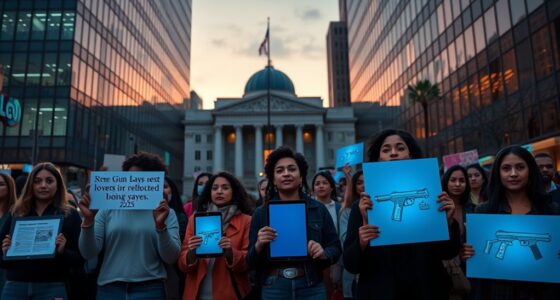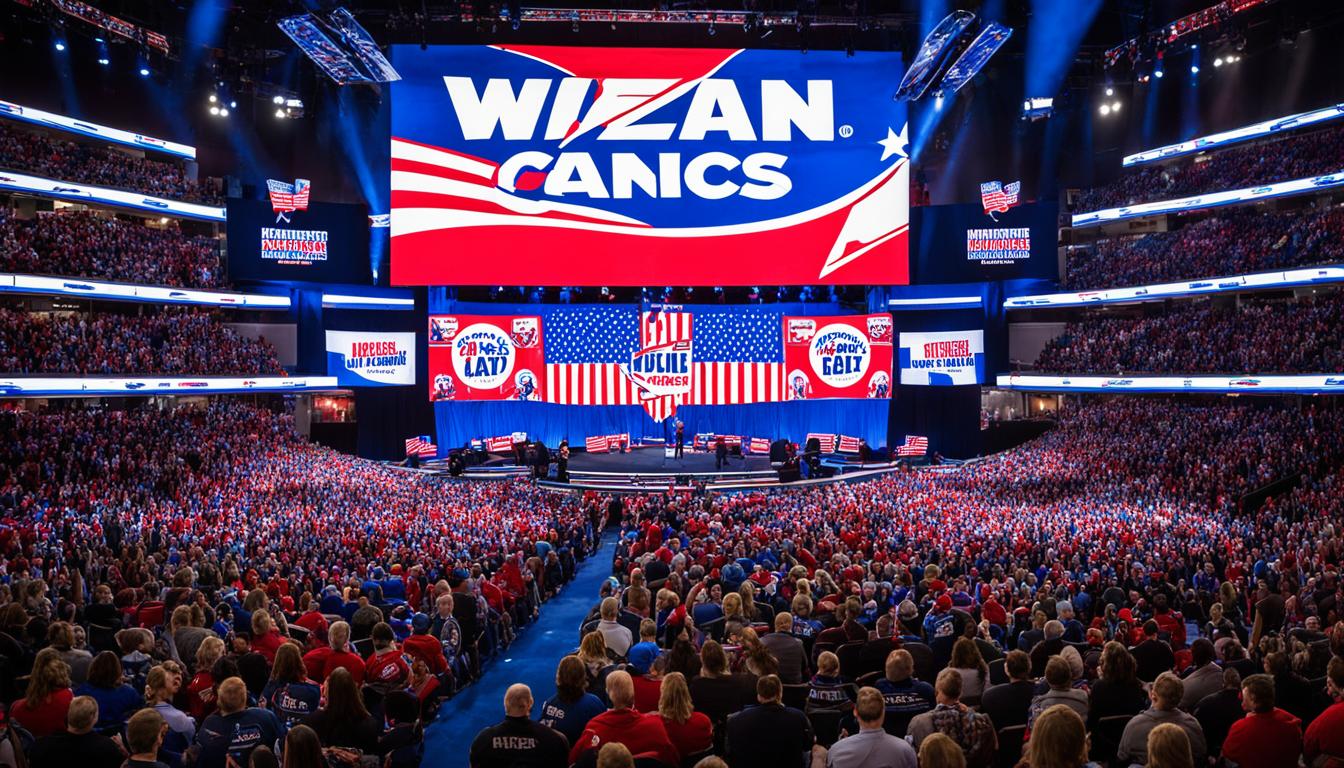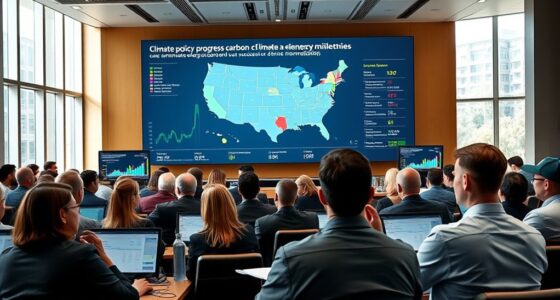The 2025 off-year elections give you a clear glimpse of voter priorities and campaign tactics that will influence the 2026 landscape. These elections shape political strategies, highlight key issues like healthcare and education, and show which demographics are most energized. Campaigns will likely adjust their messaging based on these results, setting the tone for upcoming battles. If you keep exploring, you’ll uncover how these shifts could impact future policies and elections.
Key Takeaways
- The election outcomes reveal public sentiment, shaping campaign strategies for the 2026 elections.
- Voter turnout in 2025 indicates levels of engagement that could influence 2026 candidate support.
- Results highlight key issues prioritized by voters, guiding future policy focus and messaging.
- Successful campaign tactics in 2025 will inform effective strategies for 2026 political races.
- The elections serve as a barometer for political trends and party momentum heading into 2026.

The 2025 off-year elections will shape the political landscape as voters across various states and localities choose leaders and decide on key issues outside of the presidential race. This election cycle offers a clear window into public sentiment, providing essential clues about the political climate heading into 2026. Your involvement—whether you’re voting, volunteering, or simply paying attention—can influence not just the immediate outcomes but also the strategies campaigns will adopt for the next year. Campaign strategies in these elections are more critical than ever, as candidates aim to energize their base, reach undecided voters, and maximize voter turnout. They’ll deploy targeted messaging, digital outreach, and grassroots efforts to sway voters who might otherwise stay home. You may notice a shift toward more personalized campaigns, leveraging social media platforms and local events to connect directly with voters’ concerns. This focus on voter engagement signals that campaigns recognize the importance of boosting voter turnout, especially among demographics that historically have lower participation rates. Additionally, understanding Gold IRA Rollovers can influence voters’ perspectives on financial policies and retirement planning issues discussed during campaigns.
Your role as a voter matters in this process. The strategies campaigns implement are designed to appeal to your interests and concerns, but they also depend on your willingness to participate. If you’re motivated by issues like education, healthcare, or economic policy, you’ll see candidates tailoring their messages accordingly. The effectiveness of these campaign strategies can influence whether you show up at the polls or not. When voter turnout is high, results tend to be more representative of the overall electorate, giving your voice greater weight. Conversely, low turnout often benefits certain candidates or parties, skewing the results and impacting future policy directions.
As you follow the campaigns, pay attention to how candidates communicate their platforms and respond to voter concerns. Campaign strategies will likely include efforts to mobilize specific groups, such as young voters or minority communities, who can be decisive in these off-year elections. Their success hinges on the ability to connect authentically and motivate action. Your participation can also influence how campaigns prioritize issues, leading to more focused debates on matters that matter most to you and your community.
The 2025 off-year elections serve as a testing ground for campaign tactics and a barometer for public opinion. They offer you a chance to shape the political trajectory of your state and localities. Your involvement sends a message to candidates about which issues resonate and which strategies are most effective. Ultimately, the way campaigns adapt and how voters respond will set the stage for the political battles of 2026, making these elections a key moment for shaping the future.
Frequently Asked Questions
How Might Local Election Outcomes Influence National Policy Debates?
Your local election outcomes can substantially influence national policy debates by showcasing shifts in local policy and voter engagement. When voters support new initiatives or leaders, it can pressure national lawmakers to address similar issues. These local wins often set trends, encouraging broader policy changes and increasing political engagement across the country. Ultimately, active voter participation in local races shapes the national conversation and policy direction moving into 2026.
What Role Do Third-Party Candidates Typically Play in Off-Year Elections?
Third-party candidates often act as wildcards, injecting fresh ideas and challenging the status quo. Their influence can sway electoral volatility, forcing major parties to adapt their platforms. You might see them rallying specific groups or capturing votes that could otherwise go to traditional candidates. While they rarely win, their presence shakes up the race, revealing shifting voter sentiments and reshaping the political landscape in subtle, powerful ways.
Are There Voting Pattern Shifts Compared to Previous Off-Year Elections?
You’ll notice voting patterns shifting compared to previous off-year elections, driven by increased voter engagement and new ballot initiatives. These changes suggest more diverse issues resonate with voters now, prompting different priorities and turnout dynamics. As a result, you might see more grassroots activism and unexpected outcomes, reflecting a broader engagement in local and state races. This trend indicates a potential realignment in political preferences heading into 2026.
How Do Off-Year Election Results Impact Congressional Redistricting?
Off-year election results are like the blueprint for redistricting strategies, guiding how districts are drawn. You need to watch for shifts in political power, as they influence decisions to combat partisan gerrymandering or favor one party. These outcomes can reshape congressional maps, impacting representation for years. Your involvement in these elections can help shape fairer district boundaries, ensuring your voice isn’t lost in manipulated districts.
What Demographic Changes Are Most Evident in 2025 Election Results?
In the 2025 election results, you’ll notice significant demographic shifts, especially in age demographics and racial composition. Younger voters are participating more, indicating increasing engagement among urban and diverse communities. Racial minorities are turning out in higher numbers, which could influence future policies and redistricting. These demographic changes signal a more diverse electorate, shaping political strategies and priorities as you prepare for upcoming elections.
Conclusion
As you look ahead to 2026, remember that the 2025 off-year elections offer valuable insights into political trends, with turnout reaching a surprising 40% in key races. This significant participation signals increased voter engagement, hinting at what’s to come in the next cycle. Keep an eye on these results—they’ll shape strategies and outcomes, influencing everything from local policies to national contests. Your awareness of these shifts can help you stay informed and ready for what’s next.










